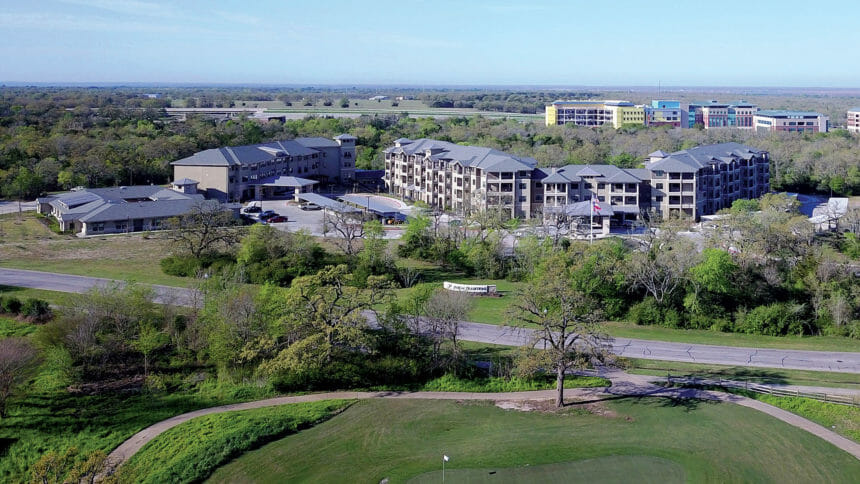
The lofty goal of creating harmony between brick and bluff has been reached with Parc at Traditions near Bryan, TX. Built into the landscape overlooking Texas Hill Country, the four-story, 159-unit senior living property takes advantage of the natural topography in the area, offering stunning views of the surrounding woodlands and sunset horizon.
Situated on 13 acres, the 186,000-square-foot community has 91 independent living, 44 assisted living and 24 memory care apartments. The property is part of Texas A&M University’s healthcare expansion zone, congruent to the Traditions golf course and the Atlas Lake and Hotel Center.
“This location supports a true resort lifestyle as well as two-way learning experiences for residents and TAMU students,” says Chris Sullivan, principal for New York-based C.C. Sullivan. “The community is expected to attract the interest of retiring faculty and alumni.”
Opened in 2018, Parc at Tradition was designed “with a sense of discovery in mind,” Sullivan says. “The winding entrance drive reveals the building frontage through an unfolding arrival sequence. Framed within the overall natural hill country context, a manicured landscape welcomes guests to a front porch verandah and porte-cochere.”
The lobby is intentionally activated by its close proximity to the spacious living room with a foundational fireplace, which in turn flows into a bar. Both rooms boast scenic views through full-height windows. These spaces lead onto a picturesque porch and event space with a tree-lined backyard.
Integral to the community design are elements that are central to life at the community, including a wellness center, salon, arts studio, media library and lounge.
These spaces also connect to the outdoors and nature through indoor-outdoor shared living areas as well as interior design and architecture styles inspired by the rustic environment, Sullivan says.
‘Trilogy’ of life
Rocky Berg, principal and partner with the Dallas-based architectural firm three, says Parc at Traditions offers a “trilogy” of lifestyle benefits, with its close association to Texas A&M, the golf course “country club” atmosphere and location within the university’s health sciences corridor.
The design is “definitely not cookie cutter,” Berg says.
“The project is unique in that it is carved into the landscape. The expansive soils have a lot of swell and clay, so it required special engineering for the foundation to do structured slabs,” Berg adds.

